7 Hip-Hop
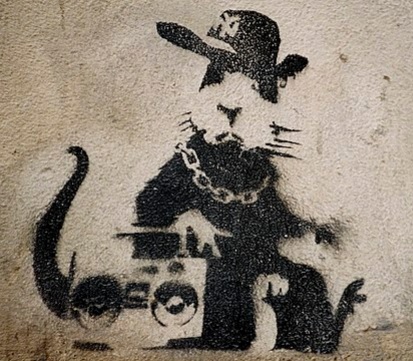
Learning Objectives
- Demonstrate a culturally informed dance aesthetic.
- Examine the origins of hip-hop
- Analyze the hip-hop cultural elements with pop culture
- Identify influential hip-hop artists
Hip-Hop is the culture of oppressed Black and Latino people that has, I guess, kind of flipped the political end of music and art on its head. Hip-Hop is the opposite of politics. Politics separates people. Hip-Hop brings people together.
—Emilio “Buddha Stretch” Austin
What Is Hip-Hop?
Hip-hop is an umbrella term that includes several dance styles that are highly energetic and athletic. Hip-hop dance forms began as social dances that expanded to respond to socioeconomic conditions faced by marginalized African American and Latinx youth in inner cities. These dance styles hold the meaning and values of the community, resulting in a cultural movement that gained widespread attention through media that has led to its global popularity today.

Watch This
The History of Hip-Hop in the Bronx.
Hip-Hop Characteristics
Africanist Aesthetics
Hip-hop dance forms are situated in Africanist aesthetics that communicate the culture’s traditions, values, and heritage. Dance scholar E. Moncell Durden identifies the cultural characteristics as “individuality, creativity, improvisation, originality, spirituality, stylization, dance posture (bending forward from the waist with the knees bent and the spine slightly curved), vocalization, pantomime, percussion, competition, polyrhythm, and polycentrism.”
Cultural Connections
For more information see the New World Encyclopedia entry for African dance:
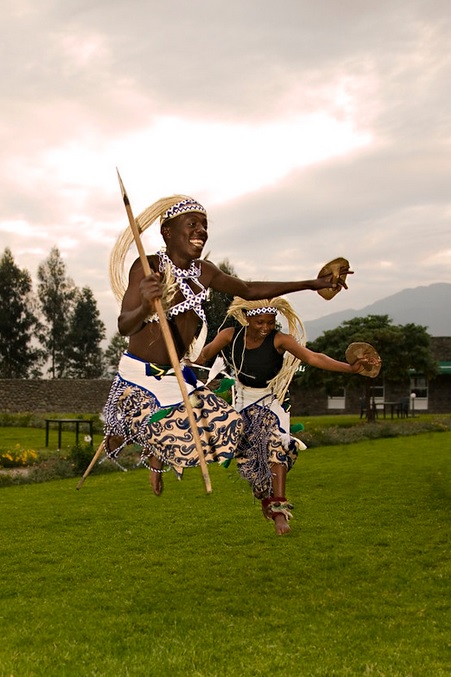
The Components of Hip-Hop Dance
Hip-hop is a cultural expression characterized primarily by five foundational components: graffiti, deejaying, emceeing, breaking, and knowledge.
Graffiti is “the visual language of the hip-hop community” (Durden). Graffiti gained attention in the late 1960s when political activists illegally “tagged” or marked public places in defiance of government policies. Later, crews used graffiti to claim territories.
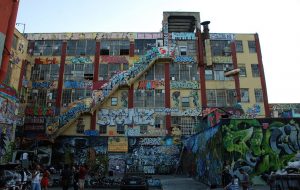
Deejays (DJs), or disc jockeys, emerged as “the sounds and memories of the community” (Durden). DJs initially hosted dance parties as part of social events. Through their experimentation with turntables and records, DJs found innovative ways to manipulate, isolate, extend, and loop the musical rhythms for dance.
Emcees (MCs) are also known as the Masters of Ceremonies. It was the emcees’ responsibility to pump up the crowd during parties. They became the community’s voice, using improvised spoken words and rhymes to tell the social conditions and experiences of the community, often shedding light on social injustices. This is known as rap today. Rapping has roots in West Africa, where griots, or storytellers, were responsible for preserving their people’s “genealogies, historical narratives, and oral traditions” (Britannica).
Breaking is considered the original street dance associated with the hip-hop subculture. Breaking is improvisational and emphasizes the dancer’s style and athleticism while responding to the musical accompaniment, typically funk music.
Knowledge is the culmination of the Afro-diasporic cultural components to recover power from oppressive systems through spiritual and political awareness. This refers to having gratitude for your heritage that will give you insight into your future and self-understanding.
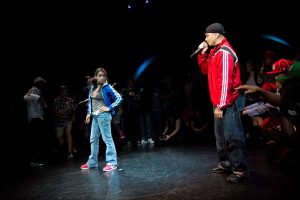
During the 1950s, residents living in the East Coast borough of the Bronx, New York City, struggled to survive in dire socio-economic conditions caused by poor city management. The community was plagued by the decay caused by the destruction of homes with the Cross Bronx Expressway construction. Families lost their homes and left the city to move into the suburbs. As people left, local businesses closed, and job opportunities became scarce, causing high unemployment rates. Government-subsidized houses known as the projects were built to provide affordable housing to low-income families. These became overrun by gangs and a rampant drug scene.
By the 1970s, poverty among residents had significantly increased. In the 1977 World Series between the New York Yankees and Los Angeles Dodgers, Howard Cosell announced, “the Bronx is burning” (Wikipedia). “For a couple of years, fires had routinely erupted in the South Bronx” as people burned down buildings hoping to collect insurance money (Wikipedia). From 1973 to 1966, the Bronx “lost 600,000 jobs, more than 5,000 families were displaced, and some 30,000 fires were set in the area” (Durden).
Hip-hop emerged from this socioeconomic turmoil in the early 1970s. Marginalized inner-city African American and Latinx youth found an outlet to release frustrations through a lifestyle informed by shared living experiences that brought the community together.
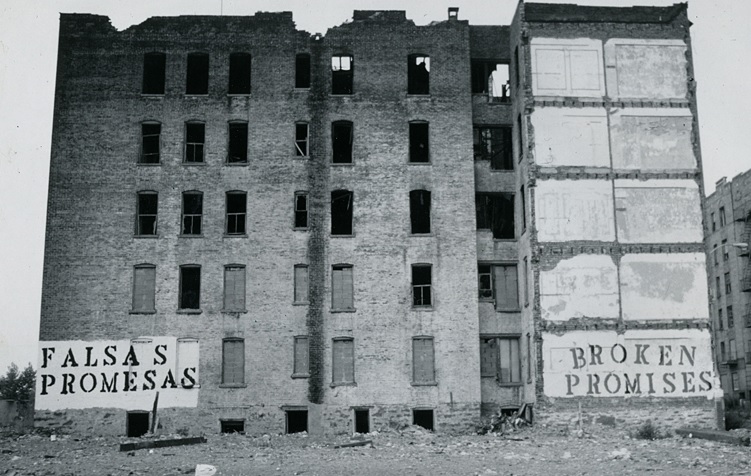
Louisiana Connection
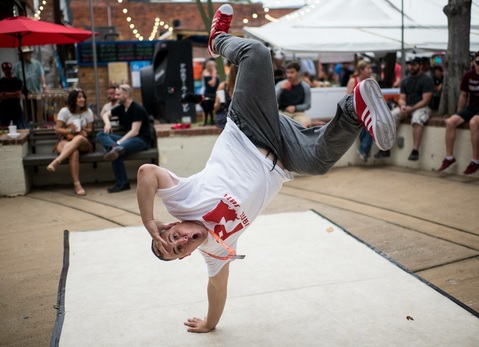
Terrance Michael Morgan: Born and raised in Louisiana, he is on a mission to improve the lives of today’s youth by promoting positive youth development through the act of art, dance, speaking and more. Morgan began as a self-taught dancer doing mostly freestyle (improvisation), where he was introduced to the hip-hop dance style of B-Boying. This led to him becoming an original member of a local dance group Kabuki Kru. He began traveling throughout the US to participate in underground B-Boy Battles and continued learning about a variety of dance styles. He currently travels as a motivational and educational speaker/artist who performs in schools, libraries, festivals, and more weekly to spread his message of positivity. He has been affiliated with the Acadiana Center for the Arts since 2004 and is also currently a touring artist for Young Audiences of Louisiana.
Clive Campbell
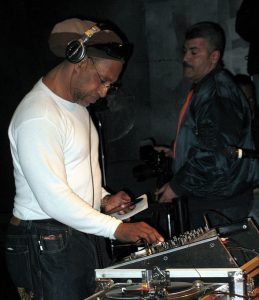
One of the earliest known DJs is Jamaican immigrant Clive Campbell, known as DJ Kool Herc. Kool Herc is considered a pioneer of hip-hop for developing a style of music that would lay the foundation for hip-hop music, giving him credit as the “father of hip-hop.”
DJ Kool Herc hosted parties where he invented the “merry-go-round” technique. Unlike other DJs, Kool Herc didn’t play songs continuously; instead, using two turntables, he isolated the instrumental breaks in the music and extended them by replaying them continually on a loop. This musical innovation made the songs danceable and encouraged people to dance at house parties. Kool Herc would promote the interaction of dancers, whom he called “breakers,” “b-boys,” and “b-girls.” The term breaking meant “going off” on the dance floor, which he incorporated in the name of breakers. Breakers began practicing and honing their skills to battle or compete against one another for bragging rights of “best dancer.”
Universal Zulu Nation
Originally called the “Organization,” the Universal Zulu Nation was formed in the 1970s by reformed gang members, discouraging youth from the lifestyle. Lance Taylor, also known as Afrika Bambaataa, is one of hip-hop culture’s most influential pioneers, who helped establish this organization. He used music to illustrate hip-hop’s youth culture and its global potential. Universal Zulu Nation was founded on ideas of “peace, love, unity, and having fun” to promote change in the community. The Universal Zulu Nation is credited with establishing the five foundational components of hip-hop. Today, the organization has branches in several world regions including, Japan, France, and South Africa.
Watch This
Original hip-hop pioneers discuss the house parties hosted by Kool Herc.
House parties became extremely popular and outgrew their spaces. They moved to the streets, where they were called block parties. DJs plugged their sound systems into the street lamps, creating a greater interaction among the neighborhood youth. Breakdancers began practicing their skills on the streets, and dance crews emerged. Dance crews became a second family to the youth, where older members acted as mentors helping newer members with their dancing. The dance crews practiced for hours, perfecting their skills and styles and developing new moves, and inadvertently stayed out of trouble because they did not have the time to engage in other activities. Disputes were settled in dance battles rather than resorting to violence. These block parties laid the foundations of hip-hop as a movement, and hip-hop dance forms were established.
Hip-Hop Dance Types
The hip-hop movement began on the East Coast of New York City; however, it was not isolated to this location. Other street dances emerged on the West Coast in California.
East Coast
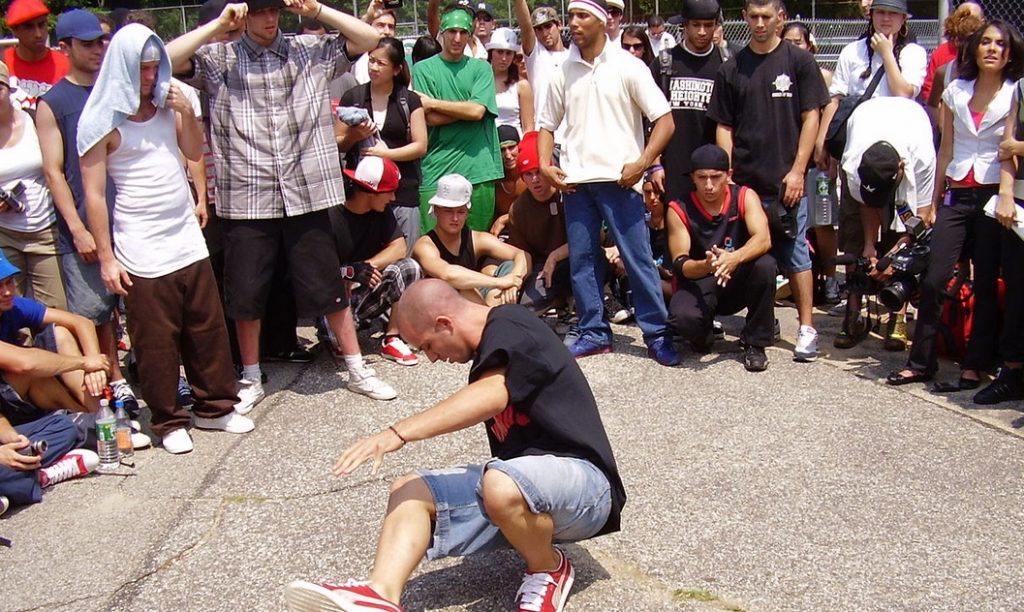
Breaking, also called breakdance by the media, is the original street dance associated with hip-hop. This dance form is generally performed solo and is highly improvisational, emphasizing the dancer’s style and flair. Breaking consists of four primary components: toprocking, downrocking, power moves, and freezes.
Toprock refers to the movement that is performed from a standing position. Toprock highlights quick, percussive footwork paired with a relaxed upper body. Breakers generally begin with toprock to enter the cipher, a circular formation of people, where individual breakers take turns dancing.
Downrock, or weight-bearing movement performed on the floor, is where the dancers support their bodies with their hands and feet.
Watch This
The 6-Step, a basic foot-skill sequence used in breaking.
Power moves are physically demanding acrobatic moves borrowed from gymnastics and martial arts requiring strength and endurance, such as spins, floats, slides, and windmills.
Watch This
Floorwork and power moves were popularized by the Latinx community.
Freeze, or a held position, consists of the breaker halting the body from movement to achieve a challenging body pose, such as a headstand.
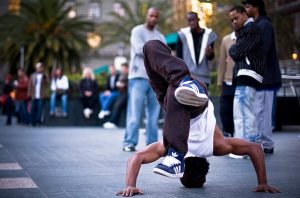
West Coast
Locking
Don “Campbellock” Campbell created a funk dance style called locking. Locking consists of briefly freezing movement into a held position before continuing. Locking is highly performative, using comedic mime-like actions with large and exaggerated gestures. Dancers interact with the audience by giving high fives and performing acrobatic moves like knee splits.
In the early 1970s, Campbell founded a group of dancers called the “The Campbellock Dancers,” later shortening the name to the “Lockers.” The Lockers received wide attention as they performed on several television shows, including The Tonight Show, The Carol Burnett Show, and Soul Train. Locking as a dance style has been featured in films, music videos, and hip-hop competitions.
Watch This
Don Campbell explain the creation of Locking.
Boogaloo and Popping
Sam “Boogaloo Sam” Solomon created two dance styles, called boogaloo and popping. Boogaloo is an improvisational street dance that uses a fluid upper body movement to give the illusion of the body not having bones. Popping is a funk dance style involving contracting and releasing the muscles to cause a jerking effect. These actions produce a robotic-like quality. Movements associated with popping include waving, ticking, strobing, scarecrow, and tutting.
Solomon formed the dance crew the Electric Boogaloos and made television appearances on Soul Train that further popularized the dance style.
Watch This
Electric Boogaloos perform on Soul Train.
Other Hip-Hop Dance Styles
Waacking
Waacking was created by the LGBTQIA+ community in the 1970s disco era. Waacking uses striking arm movements, poses, and footwork, with “emphasis on expressiveness” (Wikipedia). The moves are inspired by classic Hollywood film actors/actresses, 1960s comic book heroes, and 1970s martial art films. Waacking has undergone several name changes throughout its development and was originally called “Posing.” The first posers included Arthur Goff, Tinker Toy, Andrew Frank, and Lamont Peterson.
Waacking gained attention from the television show Soul Train featuring a battle between Tinker of the Outrageous Waackers and Shabba-Doo from the Lockers. Waacking lost attention during the 1980s and 1990s and was revived in 2003. Brian “Footwork” Green began teaching Waacking as a formal dance style, and in 2011, Kumari Surjai choreographed a Waacking routine on So You Think You Can Dance.
Watch This
Kumari Suraj discusses the history of Waacking.
Uprock
Uprock is known by several other names, such as Rocking or Brooklyn Rock. Uprock is considered a precursor to breaking. It is an urban street dance with opposing dancers or crews facing off in a line formation to challenge each other. The objective is to “undermine” their rival using movements that imitate fighting, such as burns, gestures used to ridicule opponents, typically mimicking weaponry, like the bow and arrow or shotgun, and jerks, sudden body movements. In the early 1970s, Uprock was associated with gang culture as a way to settle disputes and gain recognition and bragging rights.
Stepping
Stepping, also spelled steppin’ and also called blocking, is a complex synchronized dancelike performance that blends African folk traditions with popular culture. Stepping involves clapping, body slapping, vocalizations, and dramatic movements. The movements in this style of dance are discussed in chapter 5 and are related to hambone. This form of dance became extremely popular in the 1980s with African American fraternities and sororities and has been fused with hip-hop and other forms of dance.
Watch This
Stepping examples featuring Omega, Alpha, Zeta, Delta, Sigma, Kappa, Phi Beta Sigma – Tribute for Eddie Robinson NAACP Awards:
Clowning
Thomas Johnson, “Tommy the Clown,” created clowning, a dance style of energetic and humorous movements wearing a clown costume. Following the 1992 Los Angeles race riots, when excessive force was used in the arrest of Rodney King, Johnson wanted to do something positive for the youth in the community. He attended birthday parties and encouraged the kids to take an interest in dance. Johnson founded his dance crew called the Hip-Hop Clowns, performing at parties. His motto is “No gangs, No drugs, Do well in school (grades, attendance, and behavior) and be a role model by living a positive lifestyle at all times” (Source).
Watch This
See how Tommy the Clown and his squad of Clowns use this form of dance to express themselves and invite in others to join in.
Krumping
Clowning is the predecessor of Krumping, created in the early 2000s by Ceasare “Tight Eyez” Wills and Jo’Artis “Big Mijo” Ratti, former members of Tommy the Clown’s dance crew. Krumping uses aggressive improvised movements such as “stomps, jabs, chest pops, jumps, and arm swings” that mimic fighting (Wikipedia). However, the dance form does not condone physical violence. Dancers challenge each other to battles as an alternative to gang culture
Watch This
Choreography from the Urban Dance Camp featuring Krumping.
Check Your Understanding
Mainstream Media and Globalization
From the 1980s into the early 1990s, hip-hop gained attention through mainstream media primarily due to the rise of popularity of rap music. Two biopic films introduced hip-hop culture to the world. Style Wars and Wild Style featured Bronx’s breakers, rappers, deejays, and graffiti artists. The Hollywood film Flashdance also featured a brief scene of the Rock Steady Crew dancing on the streets.
Rock Steady Crew
The Rock Steady Crew was founded in 1977 by Joe Torres and Jimmy D. The crew is credited with creating original breaking moves and helped popularize breaking. They became well-known in 1981 when they battled the Dynamic Rockers at the Lincoln Center Outdoors Program, garnering media coverage from National Geographic and 20/20.
Watch This
The Rock Steady Crew.
These films were the onset of what would become a global phenomenon. Companies began capitalizing on the culture for monetary gains, selling instructional manuals and video tutorials on breaking. Breaking soon declined in popularity as many felt the media was trying to “sell the culture they had created back to them” (Durden). Around this time, music artists shifted the direction of hip-hop by using party dances or social dance movements to associate with specific songs in their music videos, like the Cabbage Patch and Running Man. As a result, hip-hop dance styles began appearing in commercials, television shows, documentaries, and movies that drew national recognition.
Watch This
Breakers discuss the influence the media had on breaking.
Hip-hop dance styles continue to be popularized through film and television shows. Competition-based television shows like America’s Best Dance Crew and So You Think You Can Dance feature dancers competing for the title of “best” dancer or crew.
Watch This
The Jabbawockeez perform on America’s Best Dance Crew.
Cultural Connections: Influential Hip-Hop Artists
Lorenzo “Rennie” Harris
In 1992, Rennie Harris founded the professional hip-hop dance company Rennie Harris Puremovement, bringing street dance to the concert stage. To preserve the history and cultural influences of the dance form, he founded the Rennie Harris Awe-Inspiring Works (RHAW), an organization dedicated to providing educational opportunities, master classes, and mentorship to youth in 2007.
Steffan “Mr. Wiggles” Clement
Steffan “Mr. Wiggles” Clemente is a member of the Rock Steady Crew and the Electric Boogaloos. He has appeared in several music videos, dancing for Missy Elliot, Usher, and Madonna. Today, Mr. Wiggles holds outreach programs to teach youth about hip-hop culture.
Fatima Robinson
Fatima Robinson was described in the New York Times as “one of the most sought-after hip-hop and popular music choreographers in the world” and was once named by Entertainment Weekly as one of the 100 most creative people in the world of entertainment. She has choreographed for Michael Jackson’s “Remember the Time,” the NAACP Image Awards, the VH1 Hip-Hop Honors, the 2006 movie Dreamgirls, Pepsi, Gap, Verizon, the 2005 The Wiz Live!, and the 2022 Super Bowl half-time show, just to name a few.
Emilio “Buddha Stretch” Austin
Emilio “Buddha Stretch” Austin created a hip-hop dance style called freestyle. He combines old-school with new-school moves that were popularized in hip-hop music videos. Buddha Stretch has choreographed and performed in several music videos in the 1990s, including those of Michael Jackson and Will Smith.
Check Your Understanding
Summary
Hip-hop is an umbrella term encompassing several sub-genres. Breaking is considered the original form of hip-hop dance. The hip-hop cultural movement of the 1970s was spawned from African-American and Latinx youth in marginalized, inner-city neighborhoods. During the 1980s, the media helped increase hip-hop’s popularity, gaining it widespread attention. In the 1990s, hip-hop culture, including dance, music, art, fashion, speech, and behavior, and became a component of rap music. Hip-hop dance forms are now taught in dance studios and schools and have absorbed other dance influences like jazz dance, which incorporates codified dance techniques. It is essential to recognize that these hip-hop dance styles may not be in their most authentic form that respects the cultural values and traditions from which they emerge. For the people who created hip-hop, it was a lifestyle.
Check Your Understanding
Directions: Please answer the following questions and cite any sources you use in your response.
- Breaking began as a male-dominated dance form, causing B-Girls to advocate for equality. Research a B-Girl and speak to her influences in hip-hop as a dancer. Here are a few suggestions: Asia One, Momz-N-Da-Hood, B-Girl Firefly (Andrea Parker), Lady Jules (Julie Ulrich), and Shana Busmente.
- Select a hip-hop dance from today (from YouTube, Google, TikTok etc.) and reflect on whether it holds the cultural aspects hip-hop is rooted in. Explain.
- Hip-hop is grounded in self-expression. Create a 30-second video representing your hip-hop aesthetic, informed by your individuality, and upload. Please credit any artists that you use for inspiration.
References
“About.” RHPM, 22 Feb. 2021, www.rhpm.org/about-2/.
“An Artist with a Mission.” Terrance Michael Morgan. Accessed July 8, 2022. https://terrancemichaelmorgan.com/.
Durden, E. Moncell. Beginning Hip-Hop Dance. Champaign, IL: Human Kinetics, 2019.
“Fatima Robinson (1971–).” Encyclopedia of Arkansas, February 14, 2022. https://encyclopediaofarkansas.net/entries/fatima-robinson-8213/.
Gosa, T. (2015). The fifth element: Knowledge. In J. Williams (Ed.), The Cambridge Companion to Hip-Hop (Cambridge Companions to Music, pp. 56-70). Cambridge: Cambridge University Press. doi:10.1017/CCO9781139775298.007
“Griot.” Encyclopædia Britannica. Encyclopædia Britannica, inc. Accessed February 9, 2022. https://www.britannica.com/art/griot.
“Hip-Hop: A Culture of Vision and Voice.” The Kennedy Center. Accessed May 26, 2022. https://www.kennedy-center.org/education/resources-for-educators/classroom-resources/media-and-interactives/media/hip-hop/hip-hop-a-culture-of-vision-and-voice/.
“Howard Cosell.” Wikipedia. Wikimedia Foundation, May 16, 2022. https://en.wikipedia.org/wiki/Howard_Cosell#%22The_Bronx_is_burning%22.
Kennedy, Lisa. “In L.A. Neighborhoods, Dancing Can Be Salvation.” The Denver Post. The Denver Post, May 8, 2016. https://www.denverpost.com/2005/06/29/in-l-a-neighborhoods-dancing-can-be-salvation/.
“Krumping.” Wikipedia. Wikimedia Foundation, May 7, 2022. https://en.wikipedia.org/wiki/Krumping#:~:text=Krumping%20is%20a%20style%20of,exaggerated%2C%20and%20highly%20energetic%20movement.
“Locking (Dance).” Wikipedia. Wikimedia Foundation, October 15, 2021. https://en.wikipedia.org/wiki/Locking_(dance)#:~:text=Locking%20is%20a%20style%20of,the%20same%20speed%20as%20before.
“Meet Tommy.” Tommytheclown. Accessed May 26, 2022. https://www.tommytheclown.com/copy-of-home.
“What Is Popping? (Popping Dance).” STEEZY Blog. Accessed February 11, 2022. https://www.steezy.co/posts/what-is-popping-dance.
Shapiro, Peter, ed. (2000). Modulations: A History of Electronic Music. New York: Caipirinha Productions Inc. p. 152. ISBN 978-1-891024-06-1.
“Stepping.” Encyclopædia Britannica. Encyclopædia Britannica, inc. Accessed May 25, 2022. https://www.britannica.com/art/stepping.
“Universal Zulu Nation.” Wikipedia. Wikimedia Foundation, March 9, 2022. https://en.wikipedia.org/wiki/Universal_Zulu_Nation.
“Afrika Bambaataa [Aasim, Kevin Donovan]”. Oxford Music Online. Archived from the original on March 9, 2014. Retrieved September 7, 2016.
“The True Mission Matters: Terrance M. Morgan.” The TMM Project. Accessed July 28, 2022. https://terrancemichaelmorgan.com/.
“South Bronx.” Wikipedia. Wikimedia Foundation, May 25, 2022. https://en.wikipedia.org/wiki/South_Bronx.
“Learn What Is Uprock and How the Street Dance Style Was Created.” Red Bull. Accessed July 28, 2022. https://www.redbull.com/in-hi/street-dance-style-uprock-rocking-rock-dance#:~:text=03-,What%20are%20the%20fundamental%20moves%20in%20Uprock%3F,turns%2C%20shuffles%2C%20and%20freestyle.
Hip-hop-an umbrella term that includes several dance styles that are highly energetic and acrobatic
writing or drawings scribbled, scratched, or sprayed illicitly on a wall or other surface in a public place
the original street dance form that incorporates improvisation, athleticism, and acrobatic movements that highlight the dancer’s style, and aesthetics.
embraces the historical underpinnings of the Hip-Hop movement
better known as DJ’s, plays music at parties
pumps up the crowd at parties
describes a group of street dancers who develop and hone their skills to battle other crews
movement that is performed from a standing position; quick, percussive footwork paired with a relaxed upper body
circle formation of people, where individual breakers take turns dancing
weight-bearing movement performed on the floor, where the dancers support their body with their hands and feet.
physically demanding acrobatic moves requiring strength and endurance
a held position consists of the breaker halting the body from movement to achieve a challenging body pose
briefly freezing movement into a held position before continuing
uses a fluid upper body movement to give the illusion of the body not having bones
involves contracting and releasing the muscles to cause a jerking effect. These actions produce a robotic-like quality.
uses striking arm movements, poses, and footwork; the emphasis is the expression
a precursor to breaking; an urban street dance with opposing dancers or crews facing off in a line formation
gestures used to ridicule an opponent
sudden body movements
The hambone was originally known as Pattin' Juba, hambone is an African-American style of dance that involves stomping as well as various types of body percussion.
social dance movements incorporated with hip-hop dance moves
is based on improvisation rather than the choreography seen in other dance varieties

